Humaira Tanvir, Narendra Kumar, Kunwarjeet Singh* and Vikram Kapoor
Department of Prosthodontics and Crown and Bridge, Institute of Dental Studies and Technologies, Modinagar, Ghaziabad, Uttar Pradesh, India
*Corresponding Author:
Kunwarjeet Singh
Professor, Department of Prosthodontics and Crown and Bridge
Institute of Dental Studies and Technologies
Modinagar, Ghaziabad, Uttar Pradesh, India
Tel: +91 01202771746
E-mail: drkunwar@gmail.com
Received Date: April 05, 2017 Accepted Date: April 11, 2017 Published Date: April 18, 2017
Citation: Tanvir H, Kumar N, Singh K, et al. An Innovative Wire Impression Technique of Highly Resorbed Mandibular Ridge. Periodon Prosthodon. 2017, 3:1.
Copyright: © 2017 Tanvir H, et al. This is an open-access article distributed under the terms of the Creative Commons Attribution License, which permits unrestricted use, distribution, and reproduction in any medium, provided the original author and source are credited.
Keywords
Resorbed mandibular ridge; Impression technique; Orthodontic wire
Introduction
Residual ridge resorption is a complex biophysical process following extraction of teeth. Ridge resorption is most rapid during the first year after tooth exfoliation, thereafter the rate of resorption slows down [1,2]. Severe resorption is seen more in the mandibular residual ridges as compared to the maxilla. This is because the rate of resorption is fast in the mandible than in the maxilla. Achieving maximum stability and retention may be of utmost importance for patients with atrophied mandibular residual ridges [3]. The impression technique plays the substantial role. A good impression plays an important role in the successful treatment in cases of resorbed mandibular ridges where there is inadequate tissue to fulfil the requirement of retention, stability and support [4]. An accurate impression is the foundation of a good functional prosthesis as it determines the retention and comfort of the prosthesis. The situation can be more challenging as in the cases of minimum bone height, unfavorable residual ridge morphology, and/or muscle attachments [5].
This article describes an impression technique of highly resorbed mandibular ridge using an orthodontic wire and elastomeric impression materials, to gain maximum retention and stability.
Case Report
A 64 years old female patient reported to the department of Prosthodontics and crown and bridge, Institute of dental studies and technology, Kadrabad with a chief complaint of loosening of lower denture. The patient was apparently in good health and did not report any significant medical history. Patient was a denture wearer but not satisfied with the prosthesis due to poor stability. On intraoral examination, a highly resorbed mandibular ridge was observed. There was no hypermobile tissue on palpation (Figure 1).
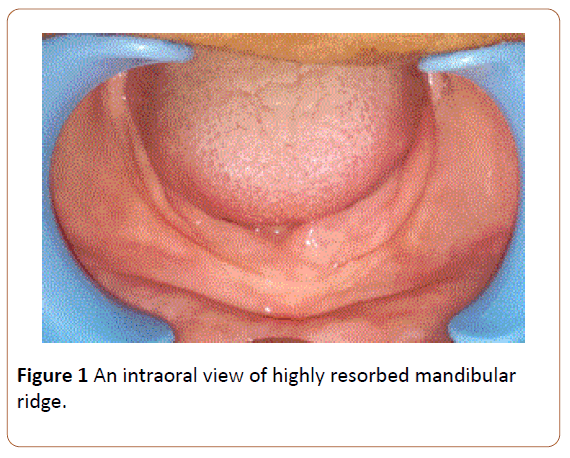
Figure 1: An intraoral view of highly resorbed mandibular ridge.
Technique
Patient’s previous denture was used for making primary impression with irreversible hydrocolloid impression material (Imprint, DPI, Mumbai). A primary mandibular cast was made using dental plaster (Dentico, Neelkanth, India).
A 19 gauge wire (S.S smith) was adapted on the mandibular ridge on the primary cast in the form of special tray. An orthodontic wire was used to make a loop with the help of universal plier, which extended from one retromolar pad to other covering the crest of the ridge. A handle was fabricated with the same wire. The special tray was evaluated in the patient’s mouth (Figure 2).
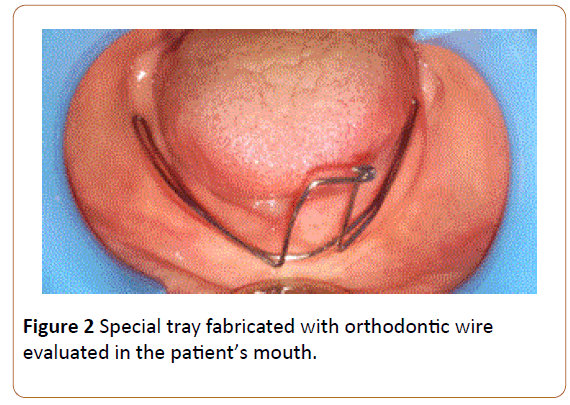
Figure 2: Special tray fabricated with orthodontic wire evaluated in the patient’s mouth.
The primary impression was made with putty consistency of Polyvinyl siloxane (Photosil, DPI, India) by mixing equal proportion of base and catalyst. The mixed impression material was loaded on wire and primary impression was made. Any deficiencies were rectified by addition of putty in deficient areas.
After completion of border moulding, a flame shaped carbide bur was used to trim the putty to make space for the final impression material. Final impression was made using addition silicone (3M ESPE, Seefeld, Germany) elastomeric impression material of light body consistency (Figure 3). Master cast was poured using die stone (Elite Rock, Zhermack) (Figure 4).
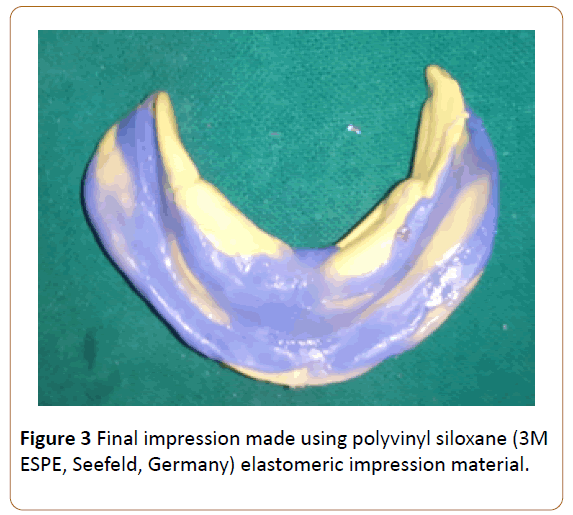
Figure 3: Final impression made using polyvinyl siloxane (3M ESPE, Seefeld, Germany) elastomeric impression material.
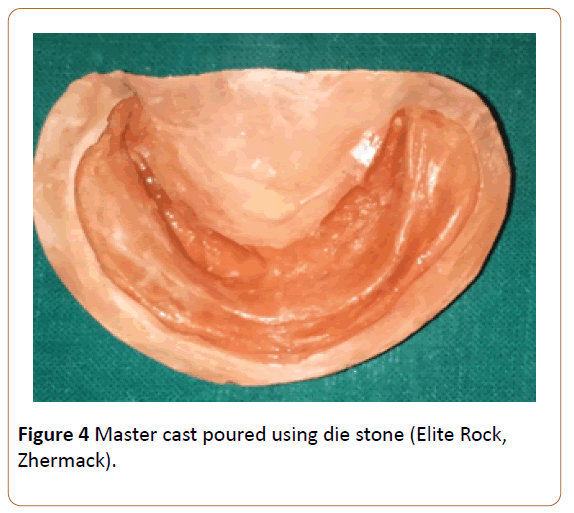
Figure 4: Master cast poured using die stone (Elite Rock, Zhermack).
Conventional denture fabrication procedures were used in fabricating the denture and the denture was delivered (Figure 5).
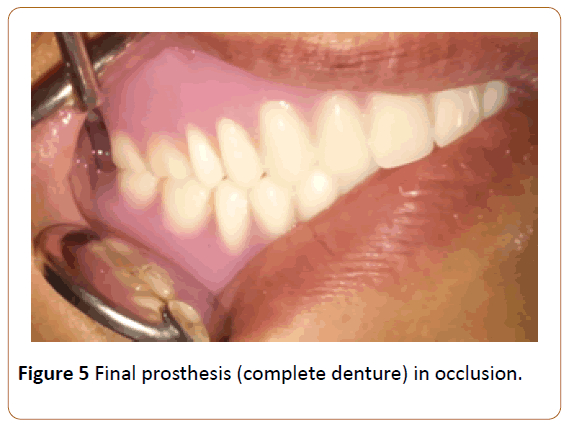
Figure 5: Final prosthesis (complete denture) in occlusion.
Patient was recalled for a follow up at intervals of 24 hours 1 week and 1 month. She was quite happy with the complete denture prosthesis and her complaint of loose denture was no more.
Discussion
The inability of the residual ridge and its overlying tissues to withstand masticatory forces is the principle problems in the highly resorbed mandible. The muscle attachments located near the crest of the ridge aggravates the dislocating effect. For these reasons, the muscle action, as well as denture extension without dislocation, must be accurately recorded in the impression. Customized wire tray that is fabricated in this technique minimizes the dislocating effect of the muscles on improperly extended denture borders. The addition silicone used in border moulding is easy to handle and can be repeatedly moulded. Multiple casts can be poured with the same impression material.
The impressions of resorbed mandibular ridges require special considerations than the maxilla due to the anatomical differences as well as the differences in the primary and secondary stress bearing areas [6,7]. Various authors suggested numerable modified impression technique for resorbed mandibular ridge such as admixed [8], functional [9] all green [10], and cocktail technique. Tan et al. suggested the use of a functional impression using fluid wax [11]. Elastomers have been used in the past and present with several advantages such as less technique sensitive, ease in manipulation, increased patient acceptance compared to those made with compound [12,13].
The purpose of this article is to describe a customized wire stock tray system that may be helpful for making impression for patients with highly resorbed mandibular ridge. The tray is easy to fabricate and can be easily moulded according to the shape and size of the residual ridge.
Conclusion
The main requirement of maxillary or mandibular impression is to record all the potential denture bearing surface available. It is the prosthodontist’s duty to select proper impression technique for particular ridge form for fabrication of a successful complete denture. This article provides a novel approach in the management of completely edentulous patient with mandibular resorbed ridge. The technique described here is simple which utilizes routine materials used for denture fabrication.
References
- Whitmyer C, Esposito SJ, Alperin S (2003) Longitudinal treatment of a severely atrophic mandible: a clinical report. Journal of Prosthetic Dentistry 90: 116-120.
- Wyatt CC (1998) The effect of prosthodontic treatment on alveolar bone loss: a review of the literature. The Journal of Prosthetic Dentistry 80: 362-366.
- Firtell DN, Koumjian JH (1992) A mandibular complete denture impressions with fluid wax or polysulfide rubber: a comparative study. J Prosthet Dent 67: 801-804.
- Freese AS (1956) Impressions for unfavorable mandibular ridges. J Prosthet Dent 6: 302-304.
- Tan KM, Singer MT, Masri R, et al. (2009) Modified fluid wax impression for a severely resorbed edentulous mandibular ridge. J Prosthet Dent 101: 279-282.
- Prithviraj VS, Kumar S, Shruti DP (2008) Conservative prosthodontic procedures to improve mandibular denture stability in an atrophic mandibular ridge. Journal of Indian Prosthodontist Society 8: 178-184.
- Jacobson TE, Krol AJ (1983) A contemporary review of the factors involved in complete dentures. Part II: stability. The Journal of Prosthetic Dentistry 49: 165-172.
- McCord JF, Tyson KW (1997) A conservative prosthodontics option for the treatment of edentulous patients with atrophic (flat) mandibular ridges. British Dental Journal 182: 469-472.
- Winkler S (2009) Essentials of Complete Denture Prosthodontics, 2nd edn. AITBS, New Delhi, India.
- Praveen G, Gupta S, Agarwal S, Agarwal SK (2011) Cocktail impression technique: a new approach to atwood’s order vi mandibular ridge deformity. Journal of Indian Prosthodontist Society 11: 32-35.
- Jennings DE (1989) Treatment of the mandibular compromised ridge: a literature review. J Prosthet Dent 61: 575-579.
- Appelbaum EM, Mehra RV (1984) Clinical evaluation of polyvinylsiloxane for complete denture impressions. J Prosthet Dent 52: 537-539.
- Smith DE, Toolson LB, Bolender CL, et al. (1979) One-step border molding of complete denture impressions using a polyether impression material. J Prosthet Dent 41: 347-351.






